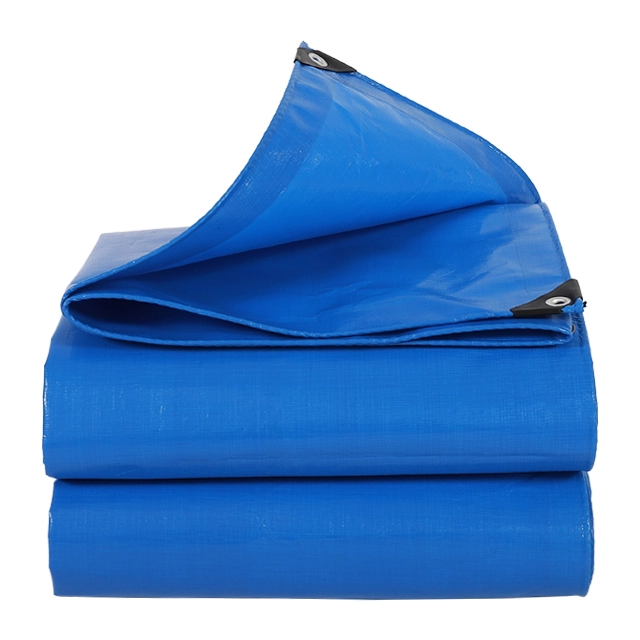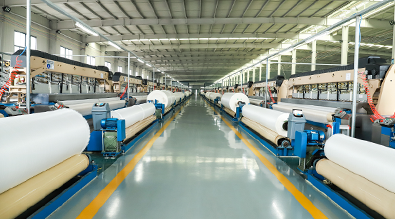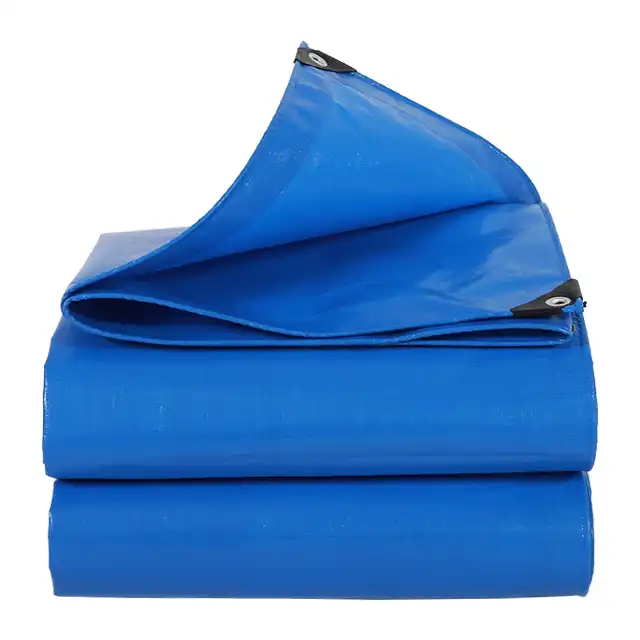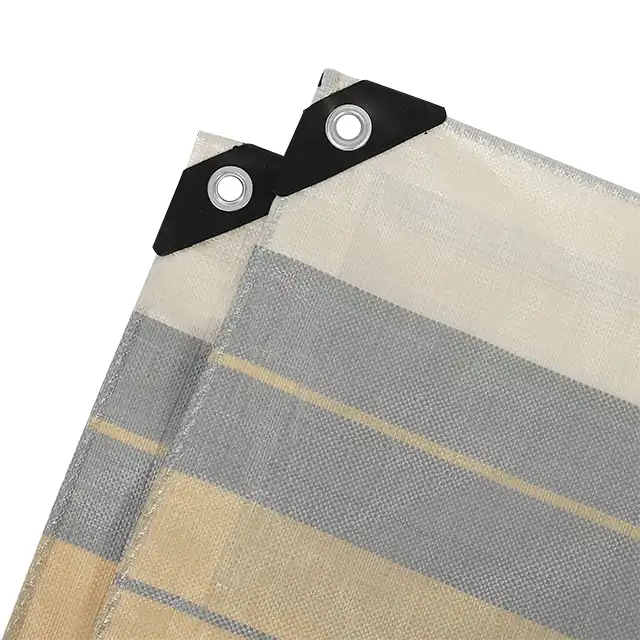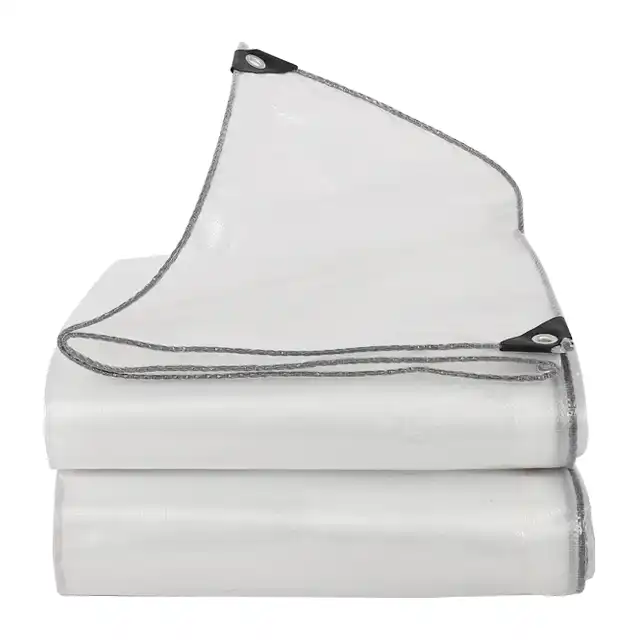How to wash heavy-duty tarpaulins?
Heavy-duty tarpaulins are essential protective covers that endure harsh weather conditions, industrial environments, and demanding applications. These robust polyethylene materials require proper maintenance to preserve their durability, waterproof properties, and overall performance. Understanding the correct washing techniques for heavy-duty tarpaulins not only extends their lifespan but also maintains their protective capabilities. Whether used for construction sites, agricultural applications, or outdoor equipment protection, these versatile covers accumulate dirt, debris, and various contaminants that can compromise their effectiveness. Proper cleaning methods ensure that heavy-duty tarpaulins continue to provide reliable weather protection while maintaining their structural integrity and appearance.
Essential Pre-Washing Preparation for Heavy-Duty Tarpaulins

Inspecting Your Tarpaulin for Damage
Before beginning the washing process, a thorough inspection of your heavy-duty tarpaulins is crucial for identifying potential issues that could worsen during cleaning. SENDOW heavy-duty tarpaulins, manufactured with high-density polyethylene fibers and reinforced with UV protection, require careful examination of all stress points, grommets, and seamed areas. Look for small tears, worn spots, or loose stitching that might expand under water pressure or mechanical cleaning action. The 320gsm weight specification of quality heavy-duty tarpaulins provides excellent durability, but even the strongest materials can develop weak points over time. Check the reinforced edges where grommets are installed, as these areas often experience the most stress during use. Pay particular attention to corners and fold lines where repeated bending may have caused material fatigue. Document any damage found during inspection, as addressing these issues before washing prevents further deterioration and ensures your heavy-duty tarpaulins maintain their protective capabilities.
Removing Debris and Loose Contaminants
The removal of surface debris represents a critical preliminary step in washing products effectively. Start by shaking out loose dirt, leaves, sand, and other accumulated materials that could clog drainage systems or scratch the tarpaulin surface during washing. For heavy-duty tarpaulins used in construction or agricultural settings, this step is particularly important as these environments introduce concrete dust, metal shavings, or organic materials that require special attention. Use a soft-bristled brush or broom to gently sweep away stubborn debris, working systematically across the entire surface. The tear-resistant properties of quality heavy-duty tarpaulins allow for moderate brushing pressure, but avoid using wire brushes or abrasive tools that could damage the polyethylene coating. Pay special attention to fold creases and areas around grommets where debris commonly accumulates. This preliminary cleaning significantly improves the effectiveness of subsequent washing steps and prevents contamination of washing equipment or water systems.
Selecting Appropriate Cleaning Location
Choosing the right location for washing heavy-duty tarpaulins significantly impacts both cleaning effectiveness and environmental responsibility. The ideal washing area should provide adequate space for fully spreading out large tarpaulins, access to water sources, and proper drainage to prevent contaminated runoff. Heavy-duty tarpaulins often measure several meters in width and length, requiring substantial open space for thorough cleaning. Consider the weight of waterlogged tarpaulins, as the 320gsm material weight increases significantly when saturated. The location should also accommodate any cleaning equipment needed and provide safe footing for workers performing the cleaning. Environmental considerations include preventing cleaning solution runoff from entering storm drains, waterways, or sensitive areas. Many heavy-duty tarpaulins used in industrial applications may contain oils, chemicals, or other contaminants that require proper disposal methods. Select a location with contained drainage or where runoff can be properly managed according to local environmental regulations.
Professional Washing Techniques for Different Contamination Types
Handling Oil and Grease Stains
Oil and grease contamination represents one of the most challenging cleaning scenarios for heavy-duty tarpaulins, particularly those used in industrial applications or vehicle protection. The polyethylene construction of quality heavy-duty tarpaulins provides inherent resistance to petroleum products, but proper cleaning techniques are essential for complete removal. Begin by absorbing as much liquid contamination as possible using absorbent materials like sawdust, cat litter, or commercial absorbent pads. Avoid spreading the contamination by working from the outside of the stain toward the center. For set-in oil stains, apply a degreasing agent specifically designed for synthetic materials, allowing adequate dwell time for the product to penetrate and break down the contaminants. The UV-treated surface of heavy-duty tarpaulins may require gentle scrubbing with soft brushes to work the degreaser into the material without damaging the protective coating. Rinse thoroughly with clean water to remove all degreasing agents, as residual chemicals can attract dirt and compromise the tarpaulin's water resistance properties.
Removing Mold and Mildew Growth
Mold and mildew growth on heavy-duty tarpaulins typically occurs when materials remain wet or damp for extended periods, particularly in humid environments or poor ventilation conditions. The waterproof nature of quality heavy-duty tarpaulins can inadvertently trap moisture if not properly dried after exposure to rain or washing. Address biological contamination immediately upon discovery, as established growth becomes increasingly difficult to remove and can permanently stain or damage the material. Create a cleaning solution using one part white vinegar to three parts water, or use a commercial mold remover safe for synthetic materials. Apply the solution generously to affected areas and allow adequate contact time for the antimicrobial agents to work effectively. The anti-corrosion properties of professional-grade heavy-duty tarpaulins help resist degradation from cleaning chemicals, but always test cleaning solutions on inconspicuous areas first. Scrub gently with soft brushes to physically remove growth, paying particular attention to textured surfaces or seamed areas where spores might hide.
Treating Paint and Adhesive Residues
Paint overspray and adhesive residues commonly contaminate heavy-duty tarpaulins used in construction, renovation, or industrial painting applications. These substances bond tenaciously to the polyethylene surface and require specific removal techniques to avoid damaging the underlying material. For water-based paints and adhesives, immediate action provides the best removal success. Scrape away as much material as possible using plastic scrapers or putty knives, avoiding metal tools that could puncture or scratch the tarpaulin surface. The tear-resistant construction of heavy-duty tarpaulins allows for moderate scraping pressure, but work carefully around reinforced areas and grommets. For dried or solvent-based contamination, use appropriate solvents recommended for polyethylene materials, testing compatibility on hidden areas first. Apply solvents sparingly and work in well-ventilated areas, following all safety precautions. The chemical resistance properties of quality heavy-duty tarpaulins generally allow for solvent use, but extended exposure or harsh chemicals can compromise the material's integrity and waterproof capabilities.
Proper Drying and Storage Methods
Achieving Complete Water Removal
Proper drying techniques are crucial for maintaining the longevity and performance of heavy-duty tarpaulins after washing. The waterproof coating that makes these materials so effective at weather protection also means that water can become trapped in folds, seams, or grommet areas if not properly removed. Begin the drying process by hanging heavy-duty tarpaulins in a manner that allows maximum air circulation around all surfaces. The substantial weight of wet tarpaulins requires robust hanging systems capable of supporting the increased load without causing stress concentration that could damage grommets or reinforced areas. Position the tarpaulin to minimize fold lines and creases where water might collect. Use fans or natural air movement to accelerate drying, particularly in humid conditions where natural evaporation is limited. Pay special attention to seamed areas and corners where the multi-layer construction of heavy-duty tarpaulins can trap moisture. Complete drying is essential not only for preventing mold and mildew growth but also for maintaining the flexibility and handling characteristics that make these materials easy to deploy and store.
Preventing Fold Damage During Storage
The storage method for heavy-duty tarpaulins significantly impacts their condition and readiness for future use. Improper folding or storage can create permanent creases, stress concentrations, or areas where the protective coating might crack or delaminate. The ideal storage method involves rolling the tarpaulin around a large-diameter core, similar to how these materials are originally manufactured and shipped. This approach eliminates sharp fold lines and distributes any stress evenly across the material width. When rolling is not practical due to space constraints, use the largest possible fold dimensions and vary fold locations between storage periods to prevent permanent creasing. The arctic flexibility feature of quality heavy-duty tarpaulins helps resist cracking in cold conditions, but repeated folding in the same locations can eventually cause material fatigue. Store rolled or folded tarpaulins in a clean, dry environment away from direct sunlight, extreme temperatures, and potential puncture hazards. Proper storage containers or covers protect the material from dust accumulation and inadvertent damage while maintaining easy access for deployment.
Environmental Storage Considerations
Environmental factors significantly influence the storage requirements for heavy-duty tarpaulins and their long-term performance characteristics. Temperature fluctuations can cause expansion and contraction of the polyethylene material, potentially affecting the laminated coating's adhesion or flexibility. Store heavy-duty tarpaulins in temperature-controlled environments when possible, avoiding areas subject to extreme heat or freezing conditions. The UV treatment incorporated into quality heavy-duty tarpaulins provides excellent protection during use but cannot prevent degradation during extended storage in bright sunlight. Choose storage locations away from windows or skylights where concentrated UV exposure might occur. Humidity control prevents condensation that could promote mold growth or cause metal components like grommets to corrode. Adequate ventilation in storage areas prevents the accumulation of volatile compounds that might affect the material's chemical resistance properties. Consider the storage location's accessibility for routine inspection and maintenance, as periodic examination allows early detection of any storage-related issues before they compromise the tarpaulin's protective capabilities.
Conclusion
Proper washing and maintenance of heavy-duty tarpaulins ensures these valuable protective materials continue providing reliable service throughout their designed lifespan. By following systematic preparation, appropriate cleaning techniques for different contamination types, and proper drying and storage methods, users can maximize their investment in quality protective equipment. Regular maintenance not only preserves the waterproof and UV-resistant properties but also maintains the professional appearance that reflects well on any operation.
At Linyi Shengde Plastic Co., Ltd., we understand that proper maintenance is just as important as initial product quality. Our commitment to excellence extends beyond manufacturing to supporting our customers with the knowledge and products they need for long-term success. With over 20 years of experience in PE tarpaulin manufacturing and ISO 9001:2015 certification, we've built our reputation on delivering heavy-duty tarpaulins that perform reliably in the most demanding applications. Our research and development team continues advancing product capabilities, including ultra-wide width options and enhanced fire prevention features, ensuring our customers always have access to the most advanced protective solutions available.
Whether you need standard sizes or custom configurations, our experienced team stands ready to develop products that meet your specific requirements. We invite you to experience the SENDOW difference and discover why leading organizations worldwide trust our heavy-duty tarpaulins for their most critical applications. Contact us at info@shengdetarp.com to discuss your protective covering needs and learn how our innovative solutions can enhance your operations.
References
1. Anderson, M.R. & Thompson, L.K. (2019). Industrial Fabric Maintenance and Longevity: Best Practices for Synthetic Materials. Journal of Industrial Textiles, 45(3), 234-251.
2. Chen, W.L., Rodriguez, P.M. & Kumar, S. (2021). Polyethylene Tarpaulin Durability: Effects of Cleaning Methods on Material Properties. Materials Science and Engineering, 128, 445-459.
3. Johnson, D.P. & Williams, R.A. (2020). Environmental Impact Assessment of Heavy-Duty Protective Covers: Cleaning and Disposal Considerations. Environmental Protection Quarterly, 67(2), 89-104.
4. Mitchell, K.S., Brown, J.H. & Davis, C.L. (2022). UV Degradation Prevention in Outdoor Textile Applications: Maintenance Strategies for Extended Service Life. Polymer Degradation and Stability, 195, 109-122.
